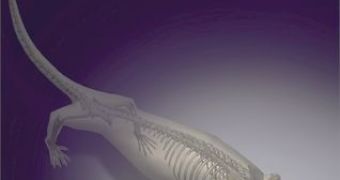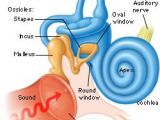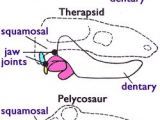First mammals roamed with the dinosaurs during the Mesozoic Era.
Now, an American-Chinese team has dug a new species of ancestral mammal, 125 million years old, that represents a missing link, providing for the first time fossil evidence on how mammals developed their middle ear, one of the most distinctive traits of all modern mammals. "This early mammalian ear from China is a rosetta-stone type of discovery which reinforces the idea that development of complex body parts can be explained by evolution, using exquisitely preserved fossils," said H. Richard Lane, program director in National Science Foundation's Division of Earth Sciences.
The fossil was baptized Yanoconodon allini after the Yan Mountains in Hebei Province (China). It was found in the Yixian Formation, a fossil-rich bed located about 300 km (180 mi) outside of Beijing.
Yanoconodon's skull has a middle ear structure intermediary between those of modern mammals and those of near reptilian relatives of mammals (named mammaliaforms). "This new fossil offers a rare insight in the evolutionary origin of the mammalian ear structure," said Zhe-Xi Luo, a paleontologist at the Carnegie Museum of Natural History (CMNH) in Pittsburgh, Pa. "Evolution of the ear is important for understanding the origins of key mammalian adaptations."
Mammals have highly sensitive hearing and highly evolved ears, but till now, no fossil revealed how this complex structure evolved. The mammalian sophisticated middle ear has three tiny bones: the hammer (malleus), the anvil (incus) and the stirrup (stapes), plus a bony ring for the eardrum (tympanic membrane).
Other vertebrates have only the hammer, and the anvil and stirrup in mammal middle ear are supposed to have evolved from the bones of the jaw hinge in their reptilian ancestors. But the way these precursor jaw bones became separated from the jaw and entered the composition of the mammals' middle ear has not been known.
"Now we have a definitive piece of evidence, in a beautifully preserved fossil split on two rock slabs. Yanoconodon clearly shows an intermediate condition in the evolutionary process of how modern mammals acquired their middle ear structure", Luo said.
Yanoconodon is mouse sized, roughly 5 inches (or 15 cm) long and weighing about 30 grams. This species belongs to a primitive group of mammals named triconodonts, characterized for the three cusps in a straight line on molars, and fed on insects and worms. It was long bodied, short limbed and possessed claws ideal for digging.
Another intermediary anatomy in Yanoconodon is represented by the high number of 26 thoracic ("chest") and lumbar ("waist") vertebrae, while most living or extinct terrestrial mammals have no more than 20 thoracic and lumbar vertebrae.
Yanoconodon also has lumbar ribs, a reptilian trait absent in modern mammals. "The discoveries of exquisitely preserved Mesozoic mammals from China have built the evidence such that biologists and paleontologists are able to make sense of how developmental mechanisms have impacted the morphological evolution of the earliest mammals," said Luo.

 14 DAY TRIAL //
14 DAY TRIAL // 


